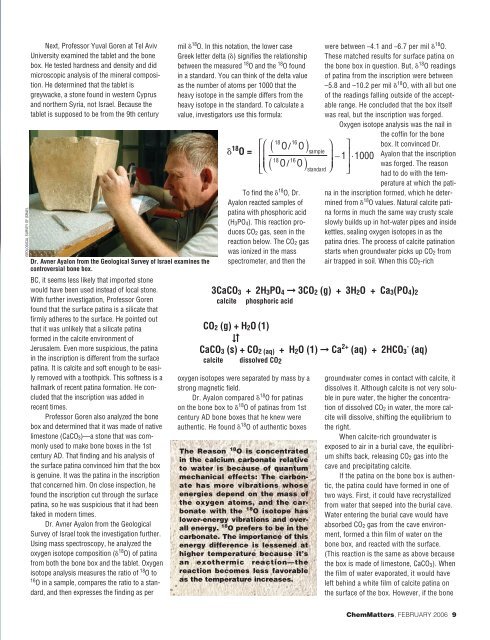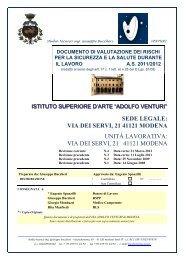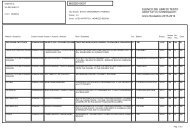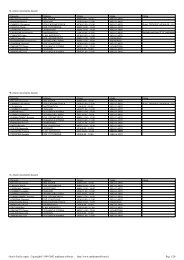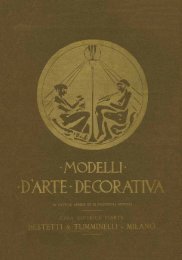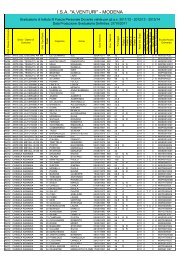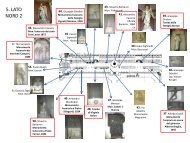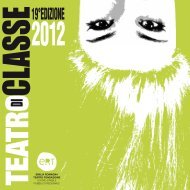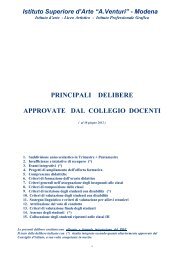and Printing
Super Fibers - A. Venturi
Super Fibers - A. Venturi
- No tags were found...
Create successful ePaper yourself
Turn your PDF publications into a flip-book with our unique Google optimized e-Paper software.
GEOLOGICAL SURVEY OF ISRAELNext, Professor Yuval Goren at Tel AvivUniversity examined the tablet <strong>and</strong> the bonebox. He tested hardness <strong>and</strong> density <strong>and</strong> didmicroscopic analysis of the mineral composition.He determined that the tablet isgreywacke, a stone found in western Cyprus<strong>and</strong> northern Syria, not Israel. Because thetablet is supposed to be from the 9th centuryDr. Avner Ayalon from the Geological Survey of Israel examines thecontroversial bone box.BC, it seems less likely that imported stonewould have been used instead of local stone.With further investigation, Professor Gorenfound that the surface patina is a silicate thatfirmly adheres to the surface. He pointed outthat it was unlikely that a silicate patinaformed in the calcite environment ofJerusalem. Even more suspicious, the patinain the inscription is different from the surfacepatina. It is calcite <strong>and</strong> soft enough to be easilyremoved with a toothpick. This softness is ahallmark of recent patina formation. He concludedthat the inscription was added inrecent times.Professor Goren also analyzed the bonebox <strong>and</strong> determined that it was made of nativelimestone (CaCO 3)—a stone that was commonlyused to make bone boxes in the 1stcentury AD. That finding <strong>and</strong> his analysis ofthe surface patina convinced him that the boxis genuine. It was the patina in the inscriptionthat concerned him. On close inspection, hefound the inscription cut through the surfacepatina, so he was suspicious that it had beenfaked in modern times.Dr. Avner Ayalon from the GeologicalSurvey of Israel took the investigation further.Using mass spectroscopy, he analyzed theoxygen isotope composition ( 18 O) of patinafrom both the bone box <strong>and</strong> the tablet. Oxygenisotope analysis measures the ratio of 18 O to16 O in a sample, compares the ratio to a st<strong>and</strong>ard,<strong>and</strong> then expresses the finding as permil 18 O. In this notation, the lower caseGreek letter delta () signifies the relationshipbetween the measured 18 O <strong>and</strong> the 18 O foundin a st<strong>and</strong>ard. You can think of the delta valueas the number of atoms per 1000 that theheavy isotope in the sample differs from theheavy isotope in the st<strong>and</strong>ard. To calculate avalue, investigators use this formula: 18 O =⎡⎛( 18 O/ 16 O )⎢sample18⎢⎝⎜ ( O/ 16 O )⎣st<strong>and</strong>ardTo find the 18 O, Dr.Ayalon reacted samples ofpatina with phosphoric acid(H 3PO 4). This reaction producesCO 2 gas, seen in thereaction below. The CO 2 gaswas ionized in the massspectrometer, <strong>and</strong> then the➞oxygen isotopes were separated by mass by astrong magnetic field.Dr. Ayalon compared 18 O for patinason the bone box to 18 O of patinas from 1stcentury AD bone boxes that he knew wereauthentic. He found 18 O of authentic boxesThe Reason 18 O is concentratedin the calcium carbonate relativeto water is because of quantummechanical effects: The carbonatehas more vibrations whoseenergies depend on the mass ofthe oxygen atoms, <strong>and</strong> the carbonatewith the 18 O isotope haslower-energy vibrations <strong>and</strong> overallenergy. 18 O prefers to be in thecarbonate. The importance of thisenergy difference is lessened athigher temperature because it’san exothermic reaction—thereaction becomes less favorableas the temperature increases.were between –4.1 <strong>and</strong> –6.7 per mil 18 O.These matched results for surface patina onthe bone box in question. But, 18 O readingsof patina from the inscription were between–5.8 <strong>and</strong> –10.2 per mil 18 O, with all but oneof the readings falling outside of the acceptablerange. He concluded that the box itselfwas real, but the inscription was forged.Oxygen isotope analysis was the nail inthe coffin for the bone⎞ ⎤ box. It convinced Dr.Ayalon that the inscriptionwas forged. The reason⎠⎟ – 1 ⎥⎥ ⋅1000⎦ had to do with the temperatureat which the patinain the inscription formed, which he determinedfrom 18 O values. Natural calcite patinaforms in much the same way crusty scaleslowly builds up in hot-water pipes <strong>and</strong> insidekettles, sealing oxygen isotopes in as thepatina dries. The process of calcite patinationstarts when groundwater picks up CO 2 fromair trapped in soil. When this CO 2-rich3CaCO 3 + 2H 3 PO 4 ➞ 3CO 2 (g) + 3H 2 O + Ca 3 (PO 4 ) 2calcite phosphoric acidCO 2 (g) + H 2 O (1)➞➞CaCO 3 (s) + CO 2 (aq) + H 2 O (1) ➞ Ca 2+ (aq) + 2HCO 3 - (aq)calcite dissolved CO2groundwater comes in contact with calcite, itdissolves it. Although calcite is not very solublein pure water, the higher the concentrationof dissolved CO 2 in water, the more calcitewill dissolve, shifting the equilibrium tothe right.When calcite-rich groundwater isexposed to air in a burial cave, the equilibriumshifts back, releasing CO 2 gas into thecave <strong>and</strong> precipitating calcite.If the patina on the bone box is authentic,the patina could have formed in one oftwo ways. First, it could have recrystallizedfrom water that seeped into the burial cave.Water entering the burial cave would haveabsorbed CO 2 gas from the cave environment,formed a thin film of water on thebone box, <strong>and</strong> reacted with the surface.(This reaction is the same as above becausethe box is made of limestone, CaCO 3). Whenthe film of water evaporated, it would haveleft behind a white film of calcite patina onthe surface of the box. However, if the boneChemMatters, FEBRUARY 2006 9


